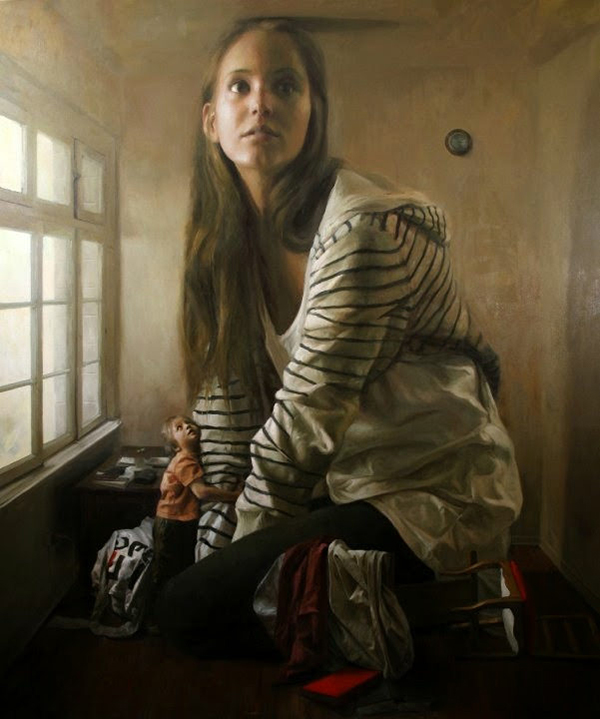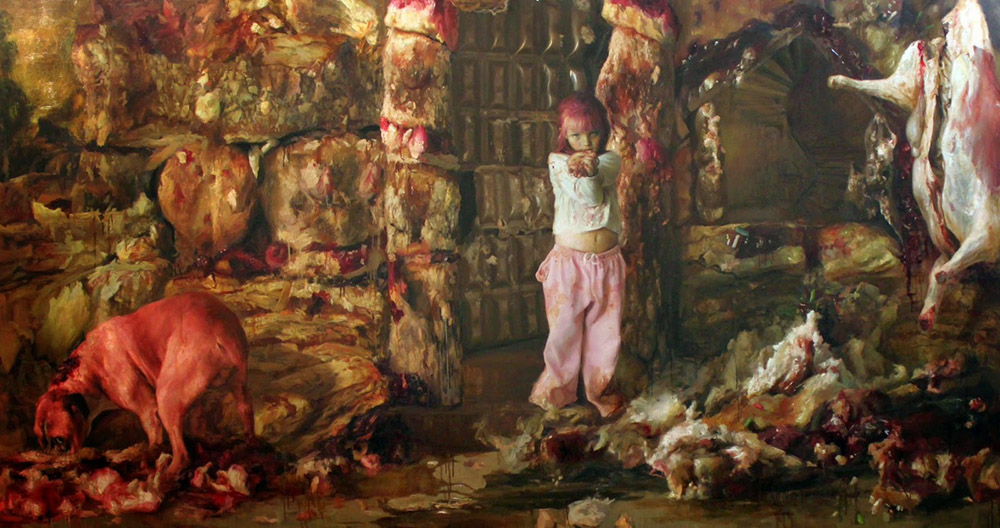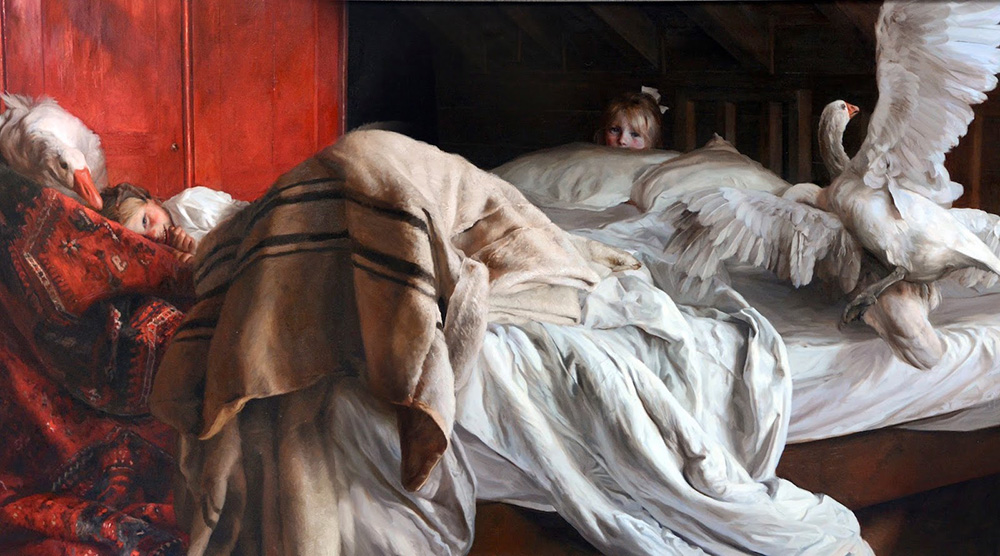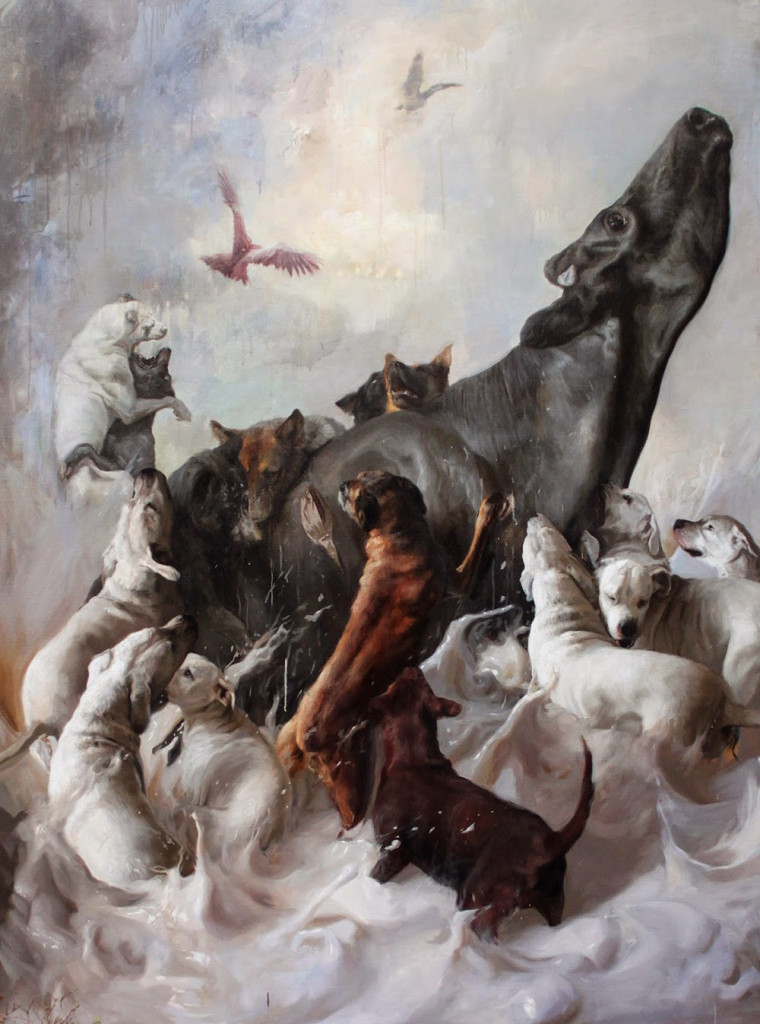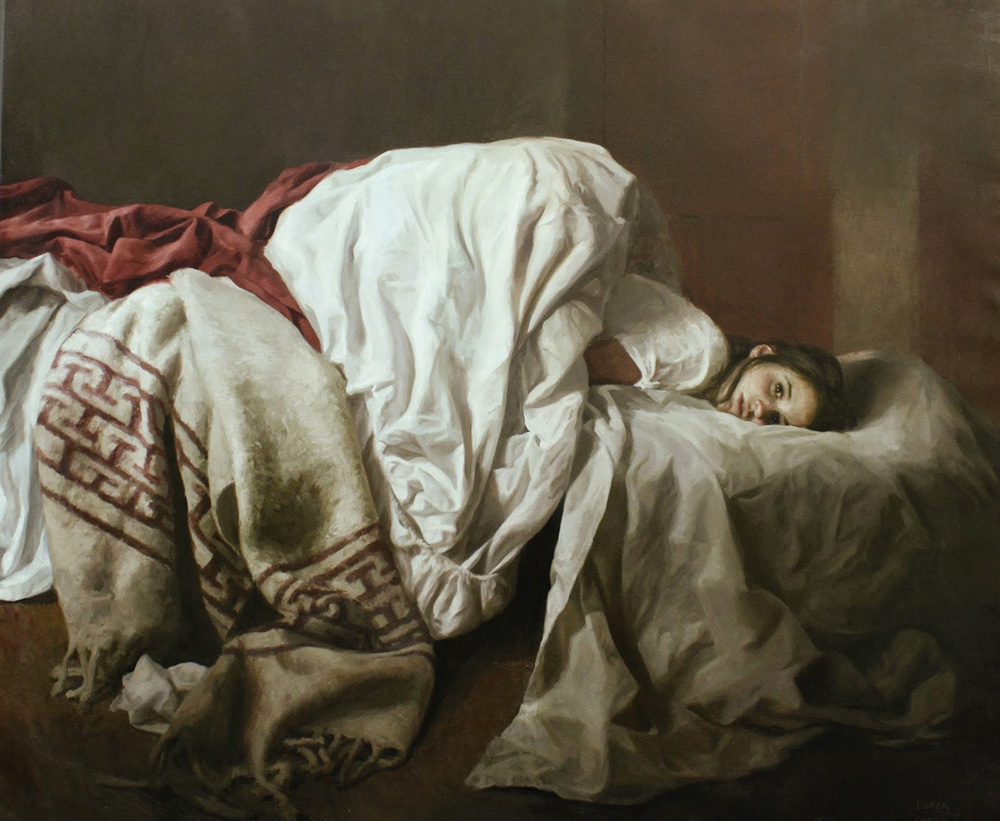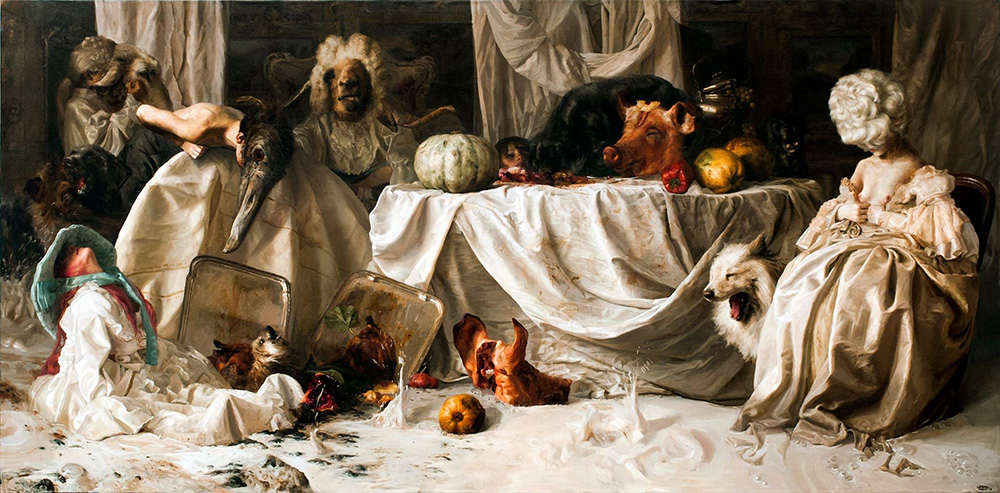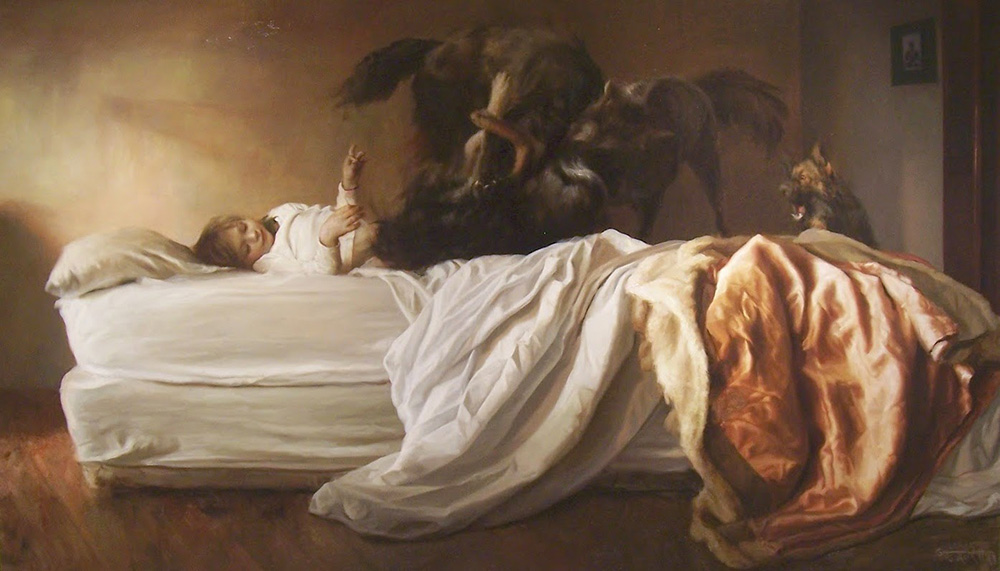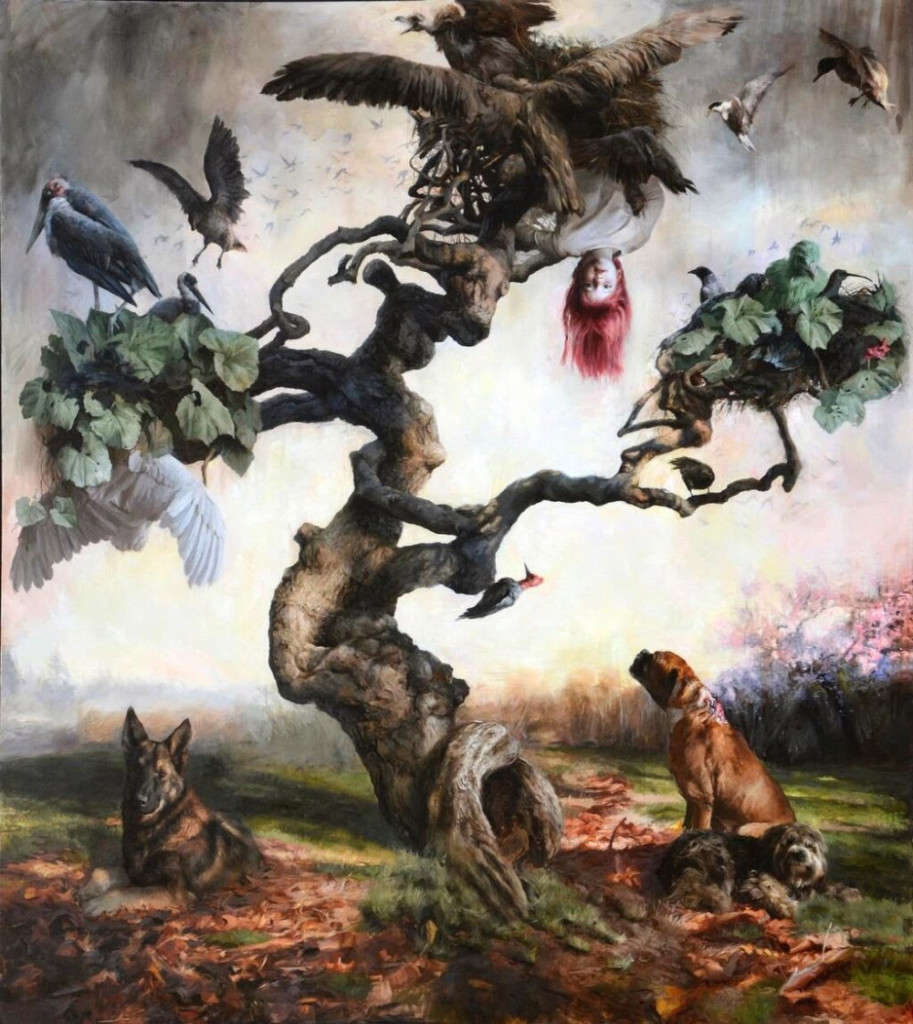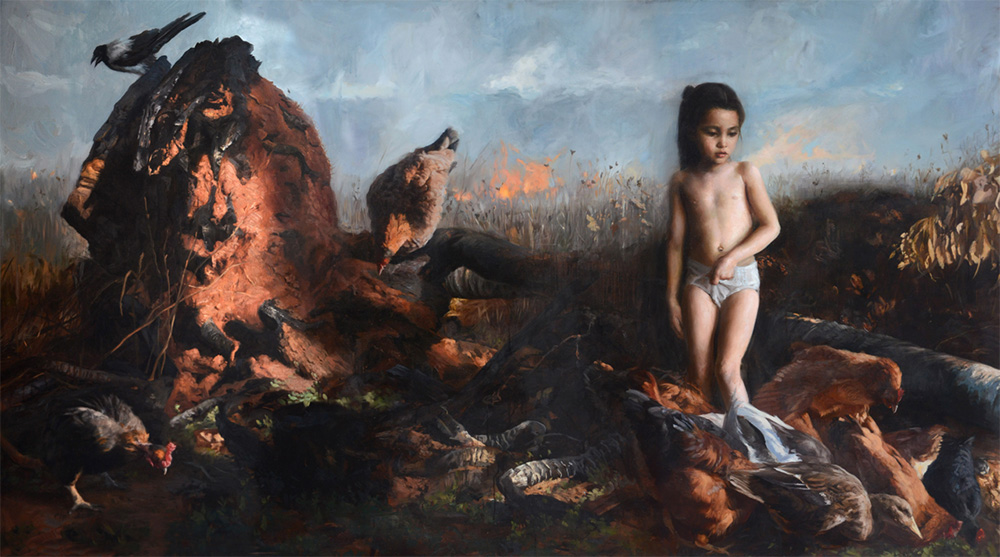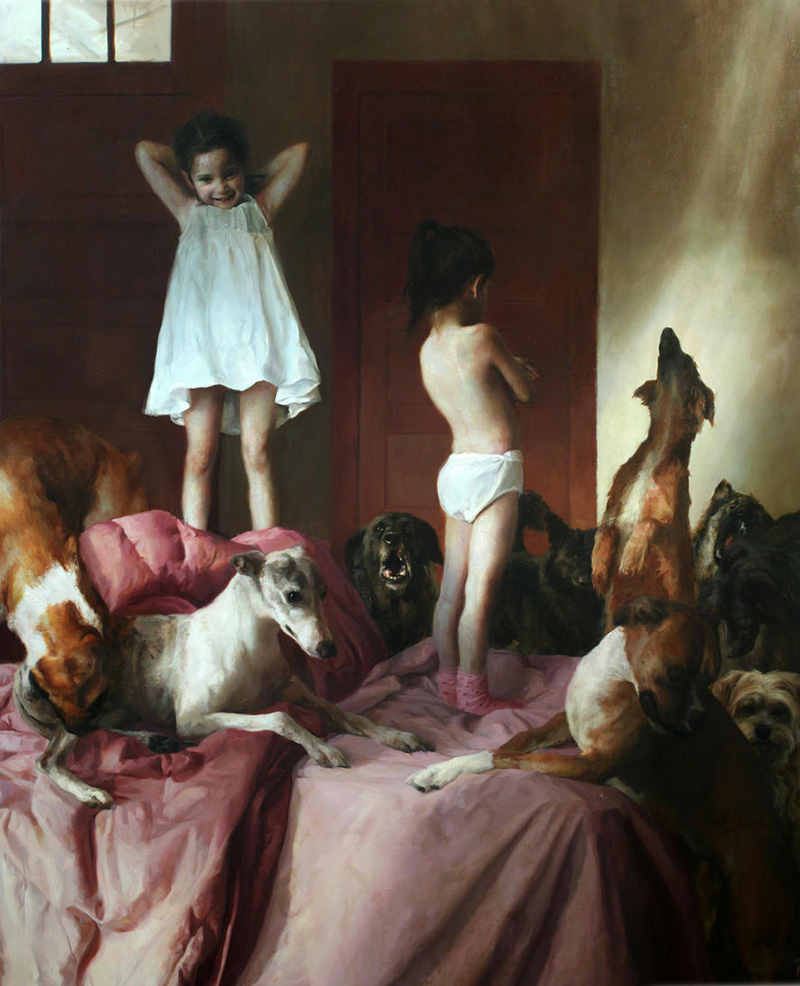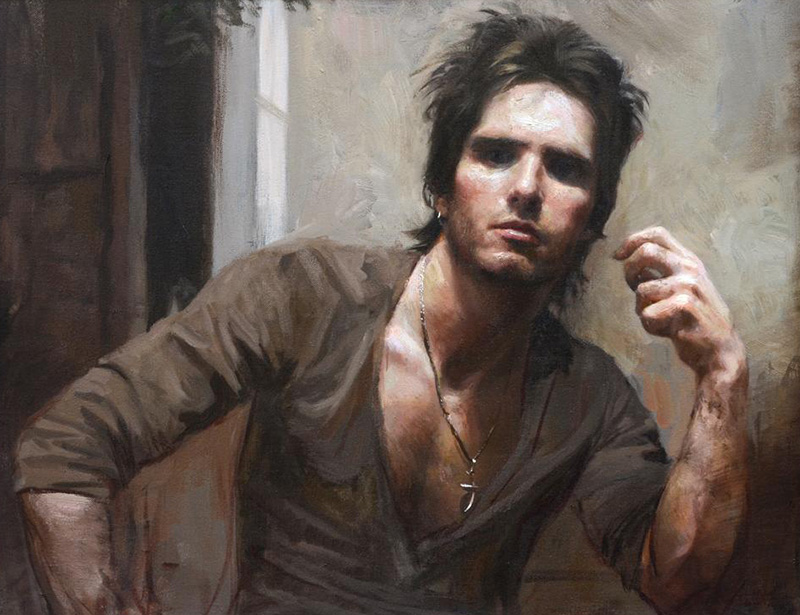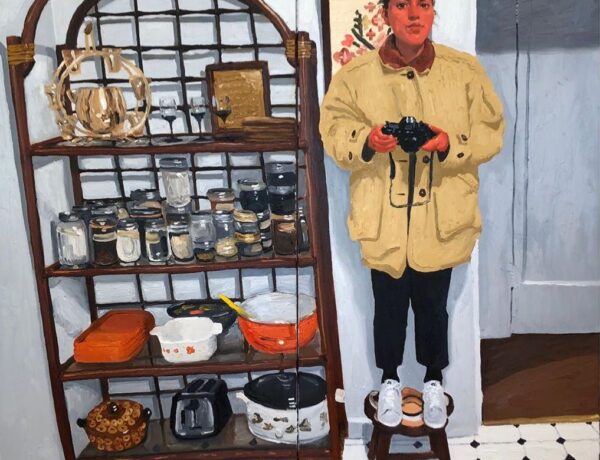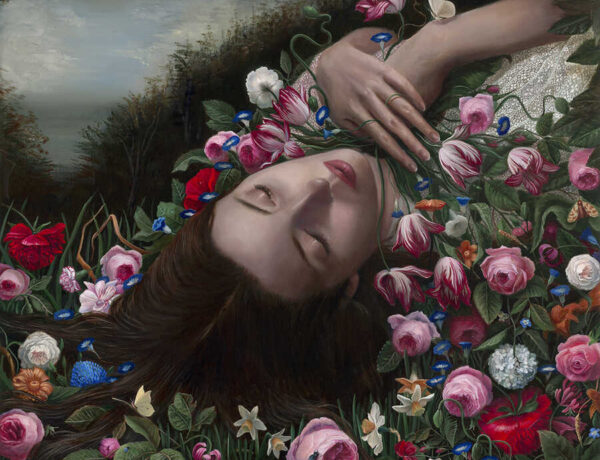Born in Santiago Chile, Guillermo Lorca Garcia-Huidobro began his artistic training at the age of 16 with painter Sergio Montero and in 2002. After his first solo exhibition at Gallery Matthei in 2007, he went on to work as apprentice and assistant with Norwegian artist Odd Nerdrum, near Oslo. In 2014 he opened his fourth solo exhibition, La Vida Eterna (Eternal Life), at the Museo Nacional de Bellas Artes – the youngest artist to exhibit individually at the institute.
Lorca’s work has been described as “marked by a remarkable baroque influence” by Roberto Farriol, Director at the Museo Nacional de Bellas Artes, clearly evident in his art. He draws from oral tradition and literature to create fantastical paintings that tell vivid stories. Although only a few years older than myself, he manages to bring an incredibly aged feeling to his creations, as though they were borne out of medieval times, with dogs, children and farm animals taking their places in his great menagerie – and menagerie it is. Lorca isn’t afraid to toy with one’s emotions, to explore the things that go bump in the night, to see whether there is something to investigate in this rumpled sheet or around that dark corner.
Many of his latest collection are hyperrealistic, with a twist. The young women portrayed in these paintings are often larger than life – in a literal sense. But they also straddle the realms of reality and fantasy, with a piece from 2010 collection entitled En Latencia (Dormant) depicting a ginormous teenage girl with a young child, disproportionately tiny in comparison, clinging to her for protection. His creations return to the same themes once the layers of colour and labour are removed: what childhood was like for us all. Or, more accurate, how much was unknown and how much of the unknown we as children were afraid of. Most of the time it was messy. It was terrifying nightmare. But there’s a certain beauty in the madness, a touch of je ne sais quoi that draws the eye, from each meticulous brush stroke to the complete and gloriously gory scene.
From the En Latencia (Dormant) Collection
Many of the children depicted look as though they could easily turn into Village of the Damned, but are also endearing in their innocence, and enduring in the face of the blood-stained stories taking place around them. Take Casita de Dulces, for instance. The name roughly translates to Little House of Sweets, but the images therein are anything but sweet. A seemingly adorable little redhead offers something suspicious to the viewer, with animal carcasses and congealed blood surrounding her, and what appears to a a Boxer sheepishly eating the innards of who knows what.
Casita de Dulces
A detailed look at Casita de Dulces
According to an in-depth interview with América Economía’s Lifestyle, Lorca explains that although there is a concrete plan to each of his collections from the get-go, but if there is a common thread in his works, but it’s spread out so well that each is entirely unique in its own right. His overall idea is to create fairytale landscapes, he says, which “manage to speak a language to the unconscious”, a subliminal message triggering the most basic of human instincts: a shudder, some goosebumps…the kind of fairytale you wish you could wake up from.
Lorca’s work is very deliberate. That is, he doesn’t paint haphazardly, but rather, each piece of the puzzle is placed on the canvas for a reason. He explains that paranoia is one of the primal feeling associated with death, and this he’s channeled incredibly well through Eternal Life. A collection of 24 paintings where realism mingles flawlessly with dreamy innocence, he says that their ability to speak to unconscious is formed through folklore, and is something forthright to children:
I think that although painting cannot replicate that phenomenon exactly, my idea was to find something that had a bit of that spirit, and I found it in a realistic painting. It evokes and holds its own narrative and it tries to appeal to the most basic human feelings.
Here’s to more ghoulishly engaging work in the near future.
Guillermo Lorca Self Portrait


